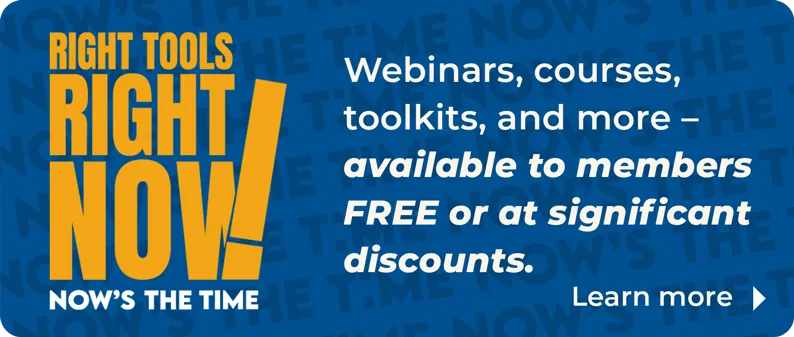Executive Summary
The mortgage market was buffeted by a number of changes in 2013 and 2014 among them higher fees at the FHA and changes to underwriting as required by the Ability- to-Repay and Qualified Mortgage Rules. This survey queries a sample of mortgage lenders about the impact of the QM rule three months after implementation in addition to questions about the impact of changes to the FHA program.
Highlights of the Survey
- Non-QM lending accounted for 1.6% of production by respondents in this sample and 8.3% were rebuttable presumption.
- An encouraging 73.7% of respondents indicated that they had fully adapted to the new rules, well ahead of expectations reported by respondents in the January survey.
- Investor preferences are important. 68.4% of respondents indicated that they did not produce non-QM loans based on investors’ preferences and a surprisingly highly 50% indicated a reluctance by investors to purchase rebuttable presumption QM loans.
- Non-QM lending was restricted to high balance and/or high quality lending.
- Since January 10th, nearly half of respondents indicated they had some issue closing a loan due to the ATR/QM rule.
- For loans that did not meet the 3% cap on points and fees, the most cited method for handling them was to reduce the fees, but second was not to originate the loan. Financing fees was the least frequent response.
- Roughly half of respondents did no use buffers ahead of the 3% cap, 43% DTI, or rebuttable presumption boundary, and 5.3% eliminated them in the three months since inception. Buy-back risk and inability to discover all information about the consumer’s ability to repay the loan were the most often cited reasons for the use of buffers.
- The vast majority, 73.7% of originators have adapted to the rules, but 22.2% of respondents indicated that they would not phase out buffers on QM safe harbor and rebuttable presumption parameters even once they are fully adapted.
- FHA’s premium increases for its mortgage insurance since 2010 and permanent MI policy have undermined an average of 5.7% potential purchases where the consumer could not afford FHA’s fees or conventional financing.
- In most cases, a consumer faced with the higher fees chose not to buy or to put off buying indefinitely or were able to qualify for VA or a RHS loan. Conventional financing was cited nearly half as often as an option and originators indicated that it is decidedly more difficult to get financing in the conventional space for a borrower with a higher LTV or lower FICO.
- Finally, roughly 10.5% of originators indicated that the FHA’s 100% mortgage insurance guarantee was not important for lending to high LTV or low FICO borrowers, while 26.3% indicated that they would not lend without it. An additional 57.9% indicated that it was important to different degrees and 5.3% were uncertain.
The Qualified Mortgage Rule and Its Impact
On Friday, January 10th, 2014, the requirements of the ability to repay and qualified mortgage (QM) rule went into effect. The Dodd-Frank act requires that originators make a good faith effort to verify a borrower’s ability to repay their mortgage and imposes stiff penalties if they do not. The QM rule allows for varying degrees of assumed compliance with the ability to repay rule, which is advantageous to lenders as it allows them to minimize and to budget for potential penalties and litigation expenses. All mortgage applications received on or after January 10th are required to comply with the ATR/ QM rule which includes full documentation of income, assets and employment, a maximum of 3% for points and fees, a cap of 43% on the back-end debt-to-income ratio, and limitations on the type of mortgage products that qualify and prepayment penalties among other requirements. [1]
NAR’s first Survey of Mortgage Originators queried originators about their expectations in the QM/ATR environment and their business plans. This second survey is a follow-up that sheds light on the actual behavior of originators in the QM/ATR environment and the impact to the purchase market.
Respondents indicated an average origination share of 1.6% for non-QM loans and 8.3% for rebuttable presumption mortgages. The vast majority of mortgages were safe harbor QM. The low share of non-QM loans is in part due to the preponderance of mortgage banks and credit unions in this sample who have limited portfolio options to hold non-QM loans.


Respondents indicated having adapted to the regulations faster than anticipated in the January survey. In the April survey, 73.7% of respondents indicated being adapted to the new regulations as opposed to just 16.7% in the January survey with an additional 44.4% having anticipated being compliant by April.

When asked how they treat non-QM, 68.4% indicated that they do not offer non-QM loans based on investor’s requirements, but 52% did not offer them based on firm policy. Only 5.3% treated non-QMs the same as safe harbor QMs, the same share that hold them in portfolio. Originators were much more willing to produce rebuttable presumption loans with just 22.2% having a firm policy against them, but half of respondents indicated no demand from investors for this product. This difference in treatment of rebuttable presumption loans between originators and investors might speak to the difference in credit risk and buy-back risk these loans pose versus salability in the secondary market for pooling. Finally, only 22.2% indicated that they treated rebuttable presumption and safe harbor QM loans the same.

Respondents were asked to rate their willingness to originate mortgages with different characteristics that fit into either the rebuttable presumption or non-QM definitions in 2014 as compared to 2013. The initial three characteristics defined non-QM loans based on product features to which respondents indicated a high degree of reluctance to originate. The next group of four characteristics dealt with mortgages that were slightly over a QM boundary. Respondents indicated an increased willingness to originate mortgages with back-end DTIs between 43.1% and 45%, but no higher and the 3% cap on points and fees is a much firmer boundary. The next group of characteristics dealt with willingness to originate non-QM mortgages with different credit profiles. Not surprisingly, reluctance to lend in this space diminished as the borrower’s credit profile improved with 10.5% of respondents even indicating that they were “more likely” to originate a non-QM mortgage to a borrower with a FICO greater than or equal to 720. Respondents expressed much less reluctance to originated rebuttable presumption loans than non-QM, but only 5.3% indicated they were “more likely” to originate these products. The reluctance toward rebuttable presumption loans, which often reflects the divide between strong and lesser credit quality, may reflect tight current overlays around credit or it might hint at a feature of the QM rule that would inhibit an expansion of credit in the future if investors are reluctant to purchase rebuttable presumption loans.

Nearly half of respondents, 47.4%, indicated that they had had some issue closing a loan since January 10th due to a requirement of the QM rule.

For loans with points and fees greater than 3%, the method cited most frequently by respondents to achieve compliance was to reduce the fee charged at 41.6%, but on average 21.3% of applications with points and fees greater than 3% were not originated and outsourcing of fees was used for an average of 18.9% of origination. Surprisingly, increasing the rate on the loan to finance charges was the least often cited option at 7.6% of the time.

When asked about the impact of outsourcing affiliated services like title insurance, only 12.5% of respondents indicated that these fees were the same as in-house rates. Nearly half of respondents, 43.8%, indicated that the outsourced fees were higher.

Some lenders have opted for buffers ahead of the QM parameters. The use of buffers was most common on the 3% cap with 28.6% of respondents employing one. 20% of respondents had a buffer ahead of the 43% maximum back-end DTI ratio and 18% for the boundary between safe harbor and rebuttable presumption QM.
When asked their rational(s) for using a buffer, 44.4% indicated concern over buy-back risk followed by “concern over ability to discover all aspects of the borrower’s ability to repay” at 38.9%. “No portfolio” was not an issue for this sample and only 16.7% of the sample indicated litigation costs as a driver.

As discussed earlier, nearly a third of respondents had not adapted to the QM rule by April of 2014. Once adapted, 22.2% intend to maintain their buffers, while only 5.6% will eliminate them.
The FHA Lending Environment
The FHA’s role increased dramatically in recent years and the agency now supports a large portion of the purchase market. In this second survey of originators, respondents were asked a series of questions about recent changes to FHA policy and facets of the program that impact the originators’ business decisions.
Since 2010, the FHA has increased the rates it charges for mortgage insurance. On average, respondents indicated 5.7% of originations were lost because of the increase in FHA fees. The distribution clustered between a response of 1.1% to 2.0% and 6.1% to 7.0%.

When asked how consumers impacted by the increase in mortgage insurance rates responded to the higher costs, 68.4% of originators indicated that they had a client(s) who chose not to buy or to put off buying indefinitely. Nearly as many originators found that their client(s) were able to find funding through VA and RHS, but only 42.1% cited having success shifting their client(s) to conventional financing with private mortgage insurance. Only 15.8% of originators cited that a client(s) could absorb the costs while 10.5% indicated that they had a client(s) who waited to save for a larger down payment.

Local FHA loan limits were lowered in many markets in in 2014. Further reductions were discussed in policy circles, but have not been acted upon. Survey participants were asked about access to credit for borrowers with profiles similar to FHA borrowers if limits are reduced. All groups would face a reduction in access to credit, but borrowers with down payments less than 5% or FICO scores below 680 would be most impacted. 88.2% of respondents indicated that a borrower with a FICO score from 620 to 679 was either “less likely” or “much less likely” to receive mortgage credit if the FHA loan limits were reduced.

Finally, when asked how important the FHA’s 100% mortgage insurance coverage is for originators to make loans with the low down payment, high DTI, or low FICO traits common to the FHA’s borrower base, only 10.5% indicated that it does not impact their choice. The majority of 36.8% indicated that it “depends on the loan, but some would not be made without” the full coverage, 21.1% indicated that “most would not be made without it” and 26.3% indicated that they “would not originate these loans without it”.

Appendix A: About the Survey
In April of 2014, NAR Research sent out a survey to a panel of 65 different mortgage originating entities. The survey instrument was sent by email on Monday the 8th of April and closed on Thursday, May 1st. Questions in the survey instrument covered the characteristics of the originators, a subset of questions focused on the qualified mortgage rule, and a set of questions focused on the FHA. There were 19 unique responses to the survey for a response rate of 29.2% and a margin of error of 11.1% at a 95% level of confidence.
Much like the first survey, mortgage bankers dominated the sample, but this sample included a modestly higher share of credit unions. Originator profiles were also similar to the first survey in terms of geographic distribution, purchase share, average annual production volume, and the distribution of destinations/purchasers of the originator’s production.
Questions can be directed to:
Ken Fears
Senior Economist,
Director, Housing Finance and Regional Economics
The National Association of REALTORS®
kfears@realtors.org
(202)383-1066
Kenneth R. Trepeta Esq.
Director – Real Estate Services
National Association of REALTORS®
500 New Jersey Ave, NW
Washington, DC 20001
(202) 383-1294
[1] For a more in-depth discussion of the new rules see http://www.realtor.org/articles/summary-of-new-qualified-mortgage-qm-rule








